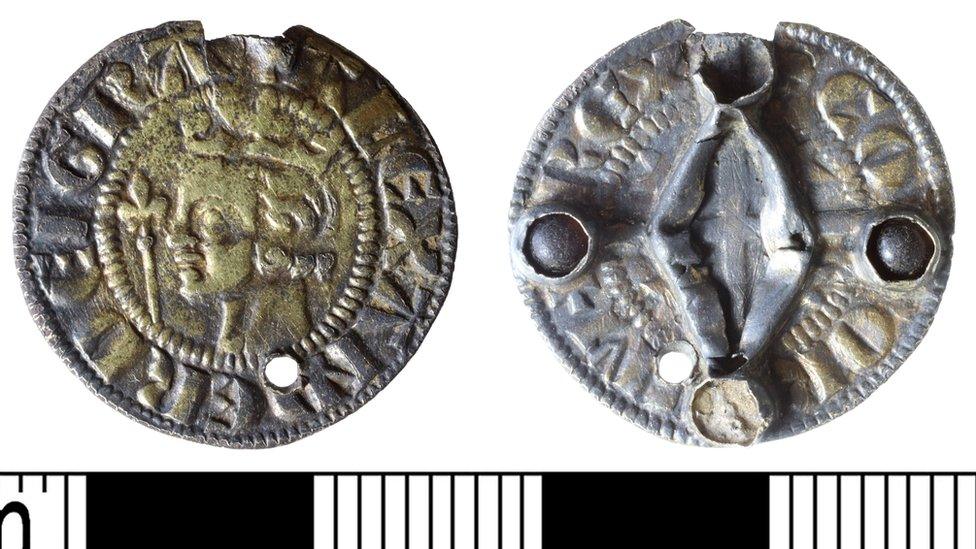Watton medieval silver coin hoard was probably a lost purse
- Published
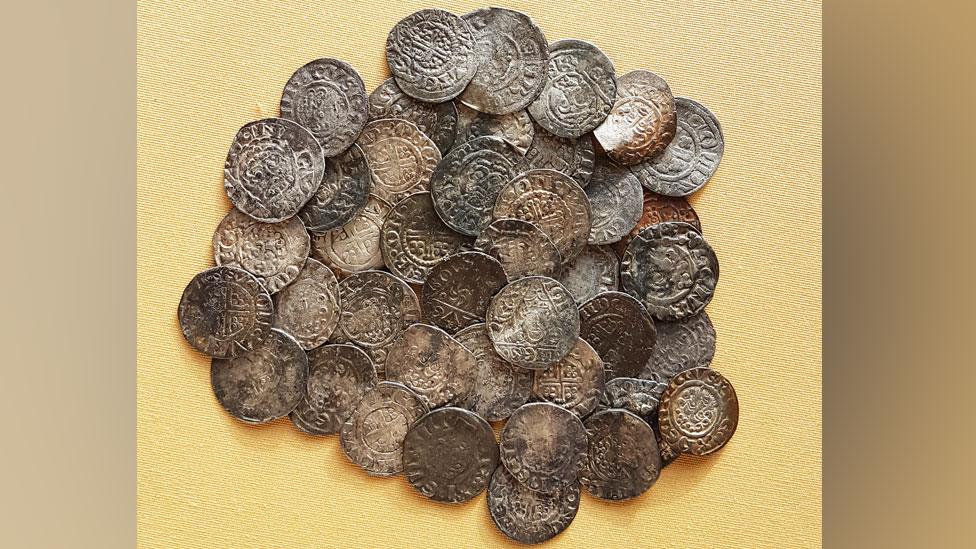
The coins span sixty years from the reigns of the Plantagenet kings, Henry II, his sons Richard and John, and his grandson Henry III
A hoard of medieval, pure silver pennies unearthed by a metal detectorist was probably the contents of a lost purse.
A mixture of 69 pennies, halfpennies and farthings were found in late 2021 and early 2022 near Watton, Norfolk, external.
Coin expert Adrian Marsden said "with a penny worth about a day's wages, the loss represents upwards of two month's work and wages" for a medieval worker.
The hoard, which dates to Henry II's reign, has been declared treasure.

Numismatist Adrian Marsden said the lost purse offers a snapshot of the types of coins circulating up until the 1240s
Dr Marsden, from the Norfolk Historic Environment Service, external, believes it was probably lost by a merchant, "someone who's dealing in coins all the time so he's got fractions as well as pennies".
"I suspect if they've lost that amount of money, they could probably afford it," he said.
"It might be life savings but I think if you've got that sort of money you can probably afford to lose it."
The purse itself would have been made from an organic material which has long since rotted away.
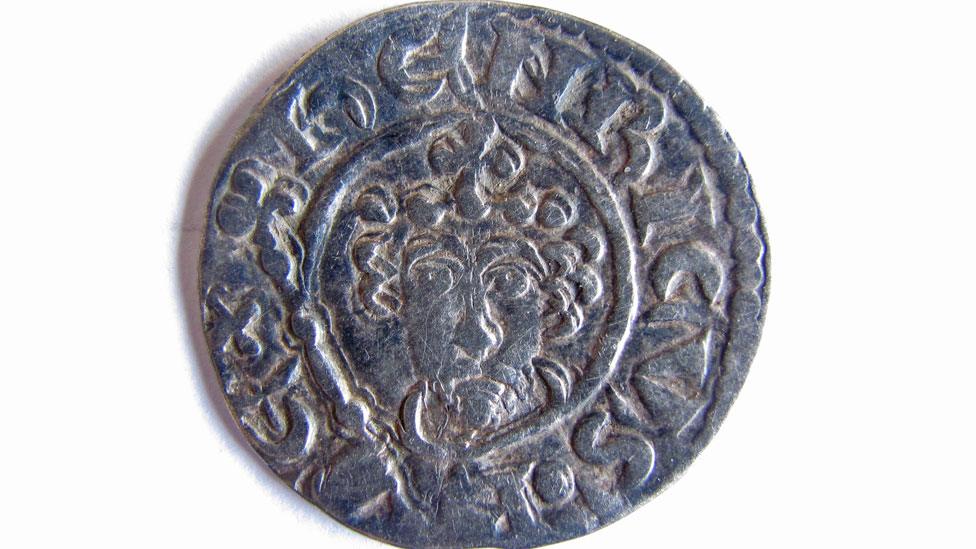
The basic type of coin did not differ, with the king's portrait on one side and a short cross on the reverse
Silver pennies were the only coins in circulation after the Norman Conquest, so traders would cut them in half to make halfpennies and in quarters to make farthings.
The hoard includes coins from the reigns of Henry II (1154-1189), his sons Richard the Lionheart (1189-1199) and John (1199-1216), and his grandson Henry III (1216-1272).
There are also three William the Lion of Scotland pennies, which "happily circulated in England, as English pennies did in Scotland", according to the coin expert.
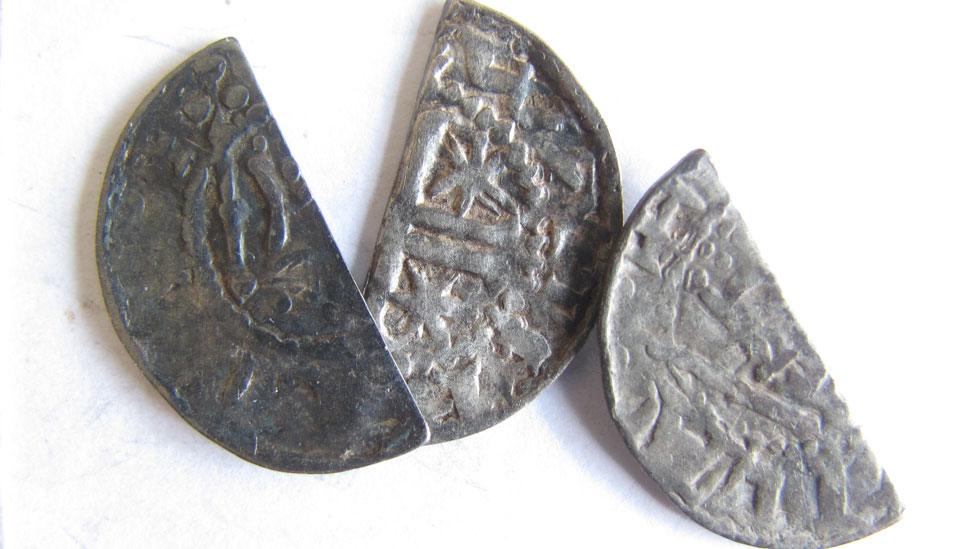
The double-armed cross made it easier to break the coins in half to make a halfpenny (as above) or into quarters to make farthings
"The nice thing about the purse is it gives you a snapshot of what's circulating in about 1240," said Dr Marsden.
The pennies are Short Cross coins, which were first minted in 1180 and continued until 1247, when there was a recoinage.
"So when you get to about 1240, you've got coins doing the rounds for 50 or 60 years," he said.
"It's very like if you were around in the 1960s, before decimalisation, you would have had Queen Victoria pennies in your purse, worn smooth with use."
A museum has expressed an interest in acquiring the hoard.

Follow East of England news on Facebook, external, Instagram, external and X, external. Got a story? Email eastofenglandnews@bbc.co.uk, external or WhatsApp 0800 169 1830
Related topics
- Published5 December 2023
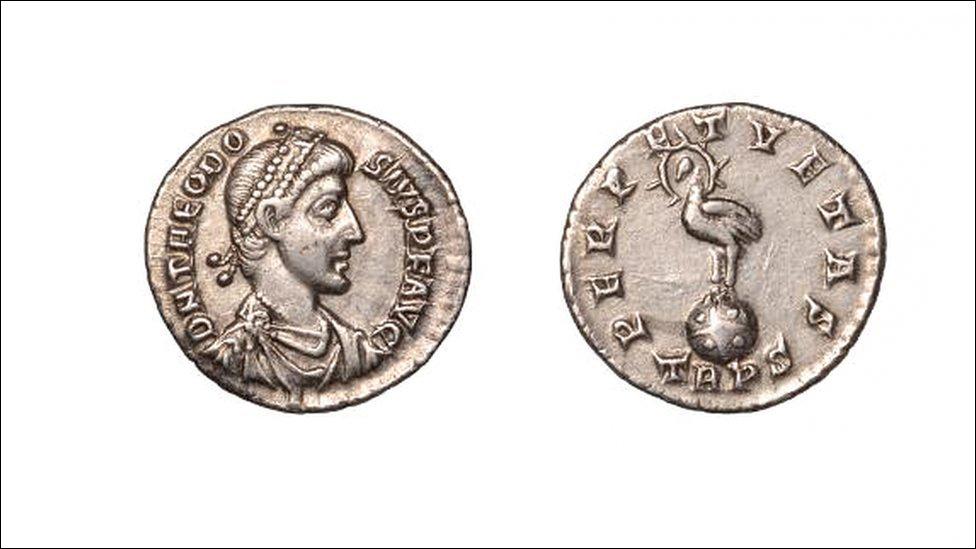
- Published29 July 2023
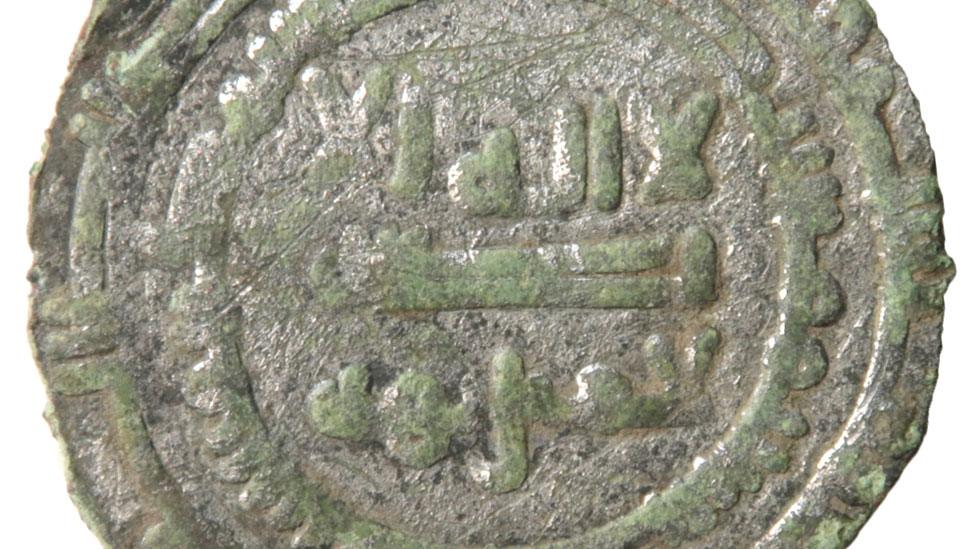
- Published3 November 2021
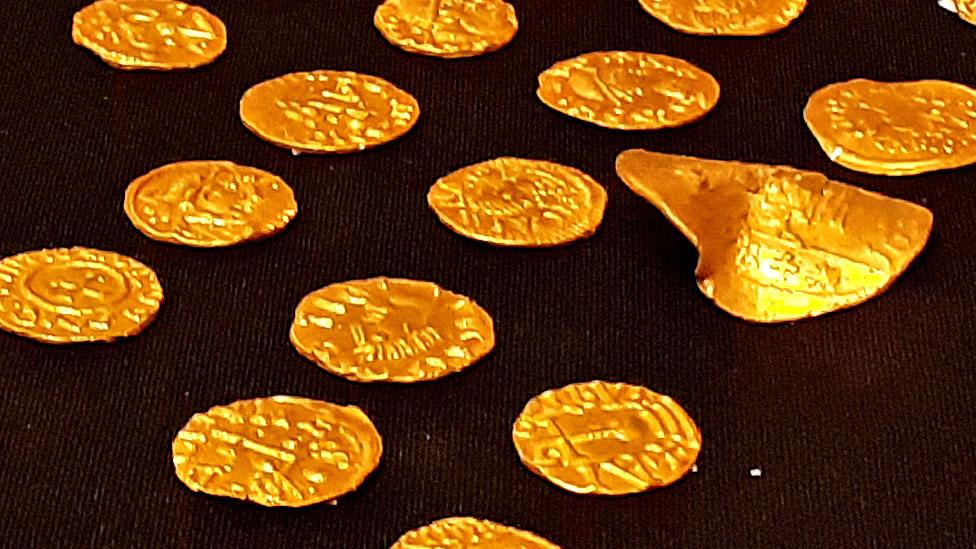
- Published19 September 2020
